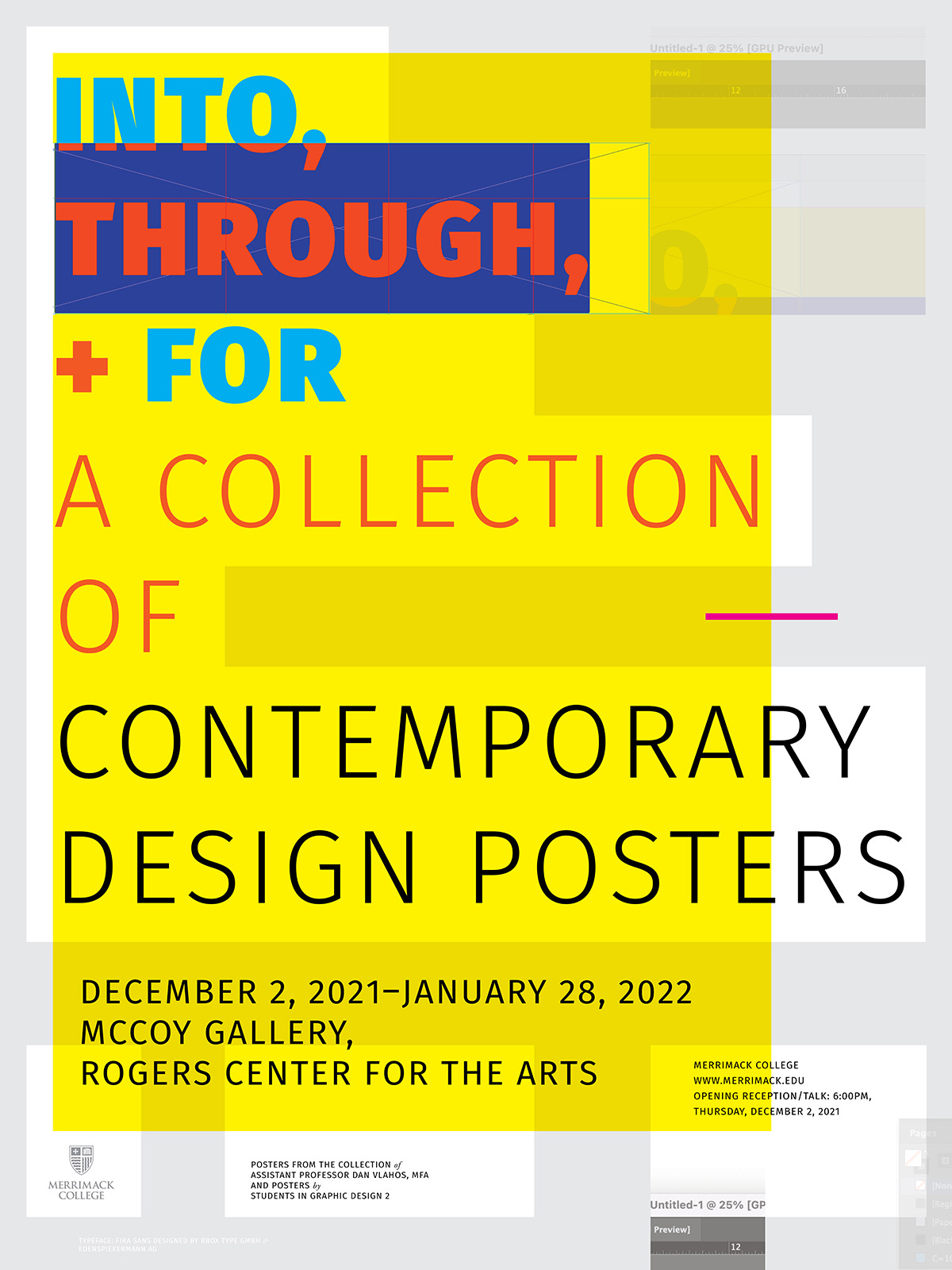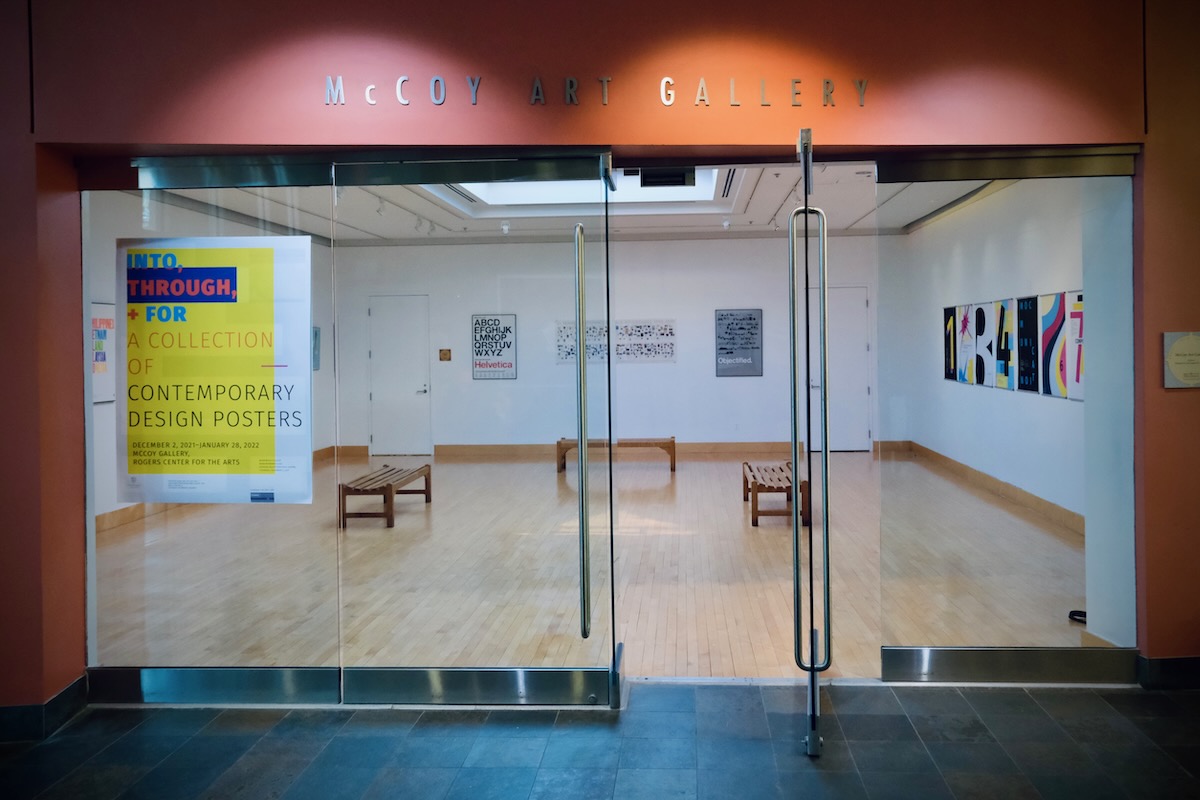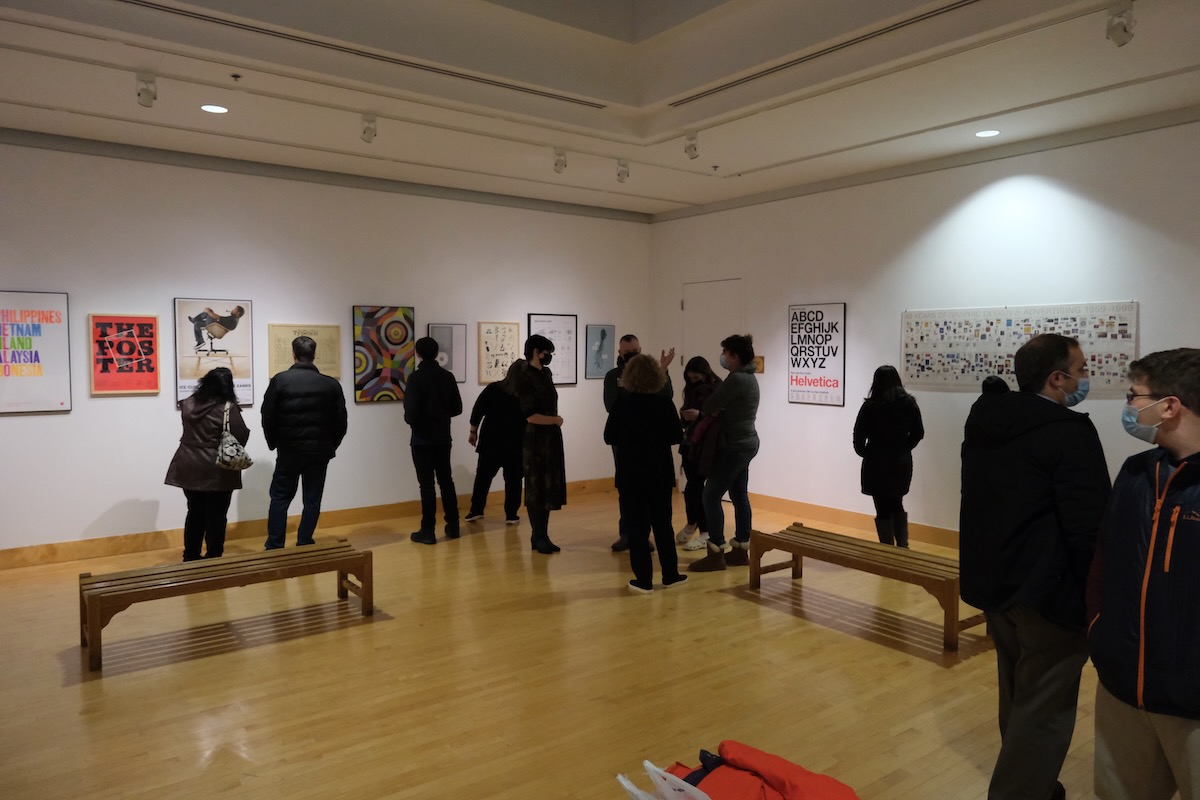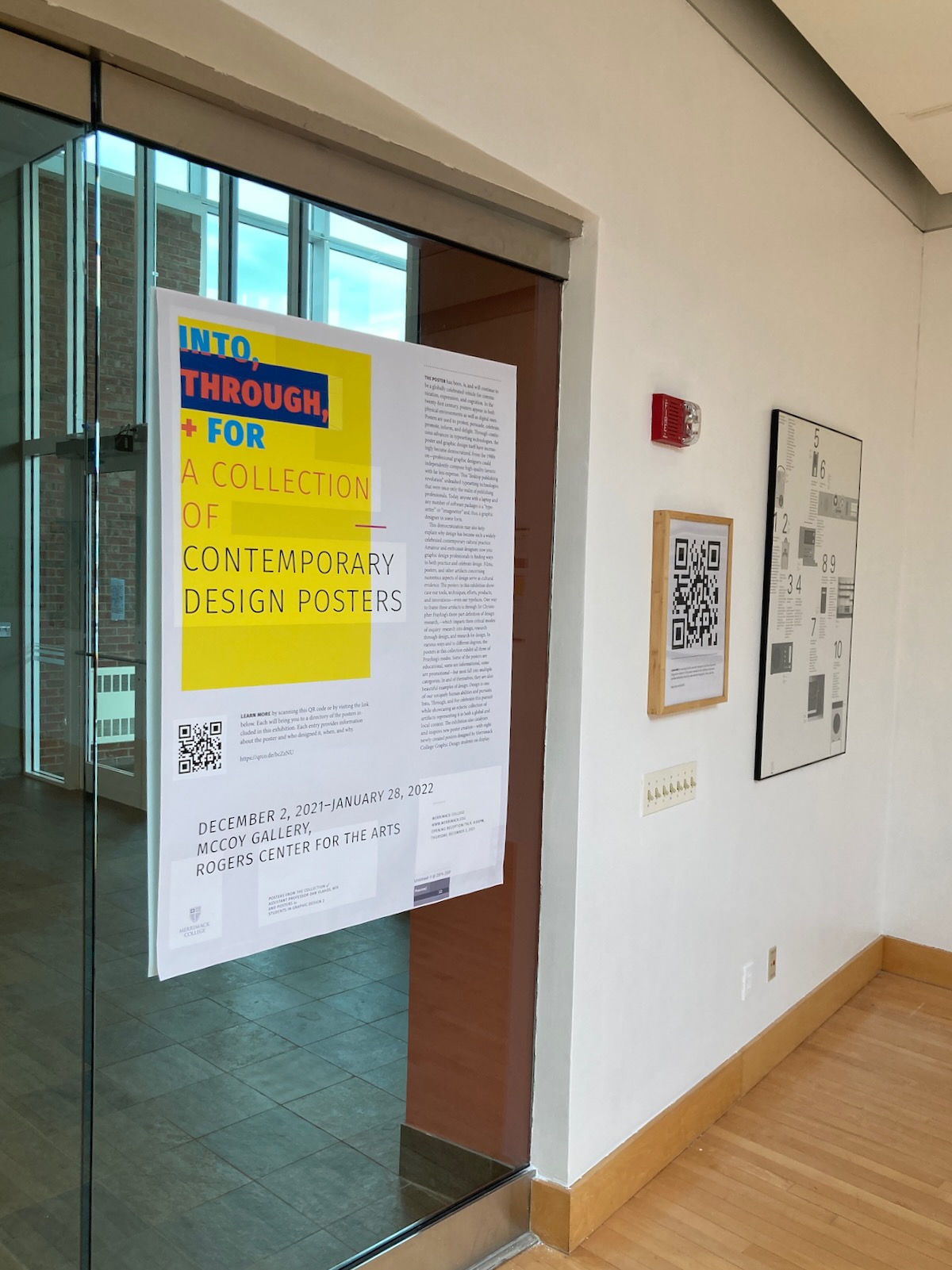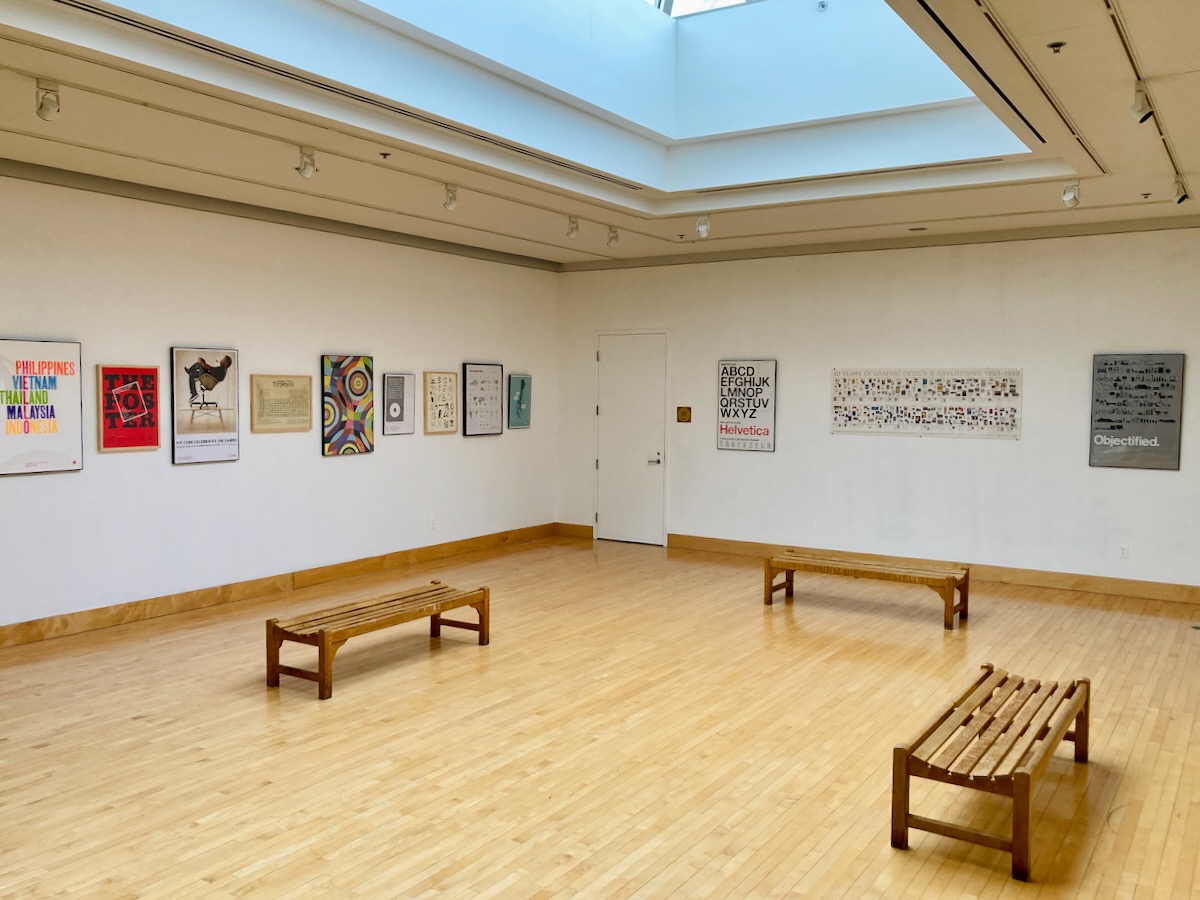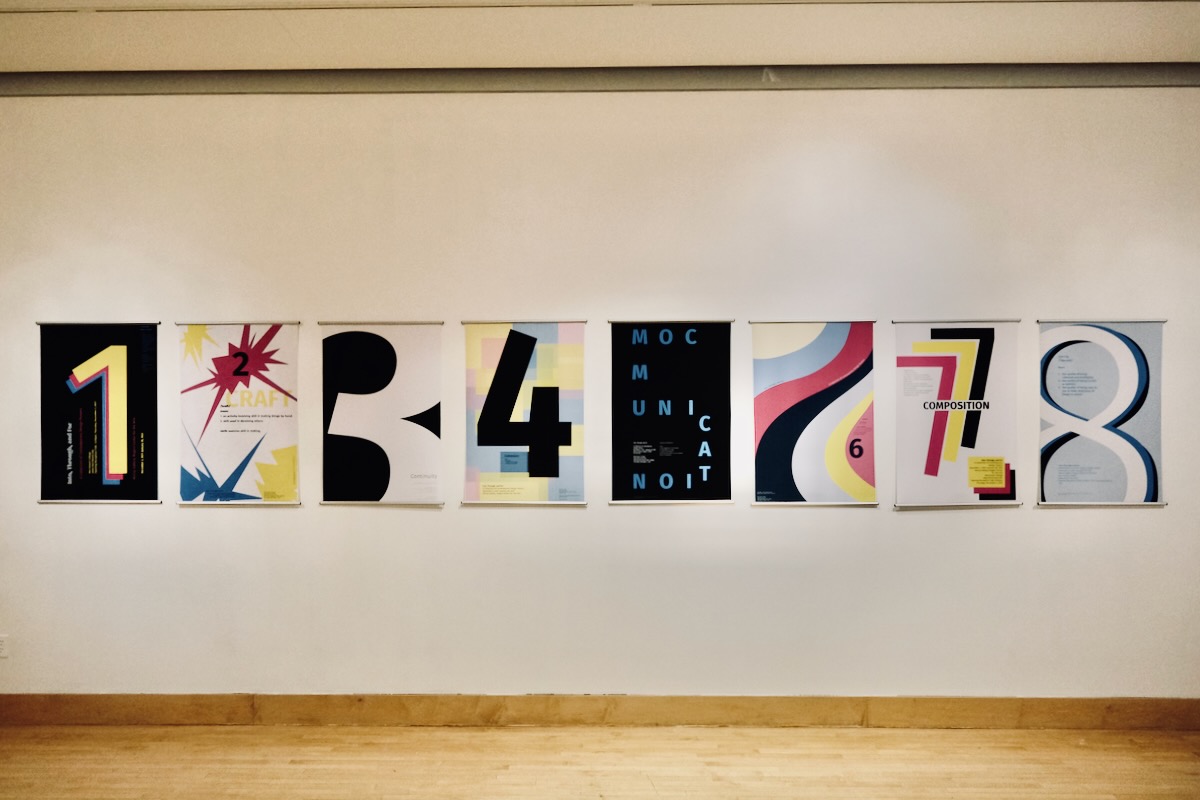In the digital age, how do design-oriented posters embody design as culture, communication, and form within a global and local context? In late 2021, I curated and exhibited an international collection of posters based on the theme of “into, through, and for design.” This public exhibition, which ran from December 2, 2021–January 28, 2022, in the McCoy Gallery, Rogers Center for the Arts at Merrimack College was attended by members of the Greater Boston design community and also the Merrimack College community. Posters in the exhibition included ones designed by Amsterdam-based graphic design studio Experimental Jetset, AIGA Medalist Chris Pullman, and the London-based independent design studio Bibliothèque. Many of the posters in the exhibition were hand-signed by the designers or directors.
During the planning and curation process, Nancy Wynn, Chair of Visual and Performing Arts at Merrimack suggested that I consider making the exhibition participatory. Wynn’s wonderful suggestion served as a catalyst for inviting my own graphic design students to custom design a set of posters within the theme of the exhibition.
I started collecting design-oriented posters in the late 1990s. Many of these posters are connected to our local (Boston) design history, while others exemplify an international history of design. One of the great qualities many posters are that they are designed to be “self-exemplary.”
Much like the posters in this exhibition, in Edward Tufte’s 2006 book Beautiful Evidence, Tufte states that, “My books are self-exemplifying: the objects themselves embody the ideas written about.” The same could be said of many, if not all, of the posters included in this exhibition. For instance, Experimental Jetset’s 2006 poster was designed to promote Gary Hustwit’s typeface-inspired documentary film Helvetica. To further exemplify the film’s theme, the poster is set in large-scale left-aligned Helvetica, with text that reads, “Meet the cast.” This is followed by an all-caps A–Z Helvetica alphabet, who are arguably the “characters” in the film.
In December 2021, I had the pleasure of attending Dan Vlahos’ Into, Through, + For: A Collection of Contemporary Design Posters exhibition at Merrimack College. From the first moment I entered the gallery, I was encapsulated by a world-class collection of pieces, each visually impressive on their own. The visual language that each poster portrayed told an engaging story. I analyzed every detail, as the poster messages were so clearly spoken in their own medium. I could easily determine the subject, material, and time period of when these pieces were made. This was all tied together with a crash course on the history of each piece provided by Vlahos. It was clear that he cared for the artistry and what made each piece special. I left with a sense of inspiration and newfound knowledge that I did not have before.
Nel DeYoung, UX/UI Designer, Greater Boston
The poster, be it digital or physical, has been, is, and will continue to be a globally celebrated vehicle for communication, expression, and cognition. Posters are used to protest, express, persuade, celebrate, promote, inform, and delight. Through continuous advances in typesetting technologies, the poster and graphic design itself have increasingly become radically democratized. From the 1980s on, professional graphic designers and amateurs could independently compose high-quality layouts at far less expense. This “desktop publishing revolution” unleashed typesetting technologies that were once only the realm of publishing professionals. Today, anyone with a laptop and any number of software packages is a “typesetter” or “imagesetter” and, thus, a graphic designer in some form.
This democratization may also help explain why design has become such a widely celebrated contemporary cultural practice. Amateur and enthusiast designers now join graphic design professionals in finding ways to both practice and celebrate design. Films, posters, and other artifacts concerning numerous aspects of design serve as cultural evidence. The posters in this exhibition showcase design tools, techniques, efforts, products, and innovations—evidence of objects, culture, and history. One way to frame these artifacts, and the catalysts for the title of the exhibition is Sir Christopher Frayling’s three-part definition of design research,—which imparts three critical modes of inquiry: research into design, research through design, and research for design. In various ways and to different degrees, the posters in this collection exhibit all three of Frayling’s three modes. Some of the posters are educational, some are informational, and some are promotional—but most fall into several of these categories. In and of themselves, they are also beautiful examples of visual communication and design. Into, Through, and For celebrates the poster as an embodiment of design as culture, communication, and form within a global and local context.
Besides curating, planning, promoting, and organizing the show, I also developed the graphics and signage for it. One of my own posters—a 2009 poster for the architecture firm Shepley Bulfinch—appeared in the show. The poster won the 2009 AIGA Best of New England design award. A public talk and lecture were given in the gallery on December 2, 2021.
Credits—
Exhibition Design and Curation: Dan Vlahos
Interim Gallery Director: Jonathan Latiano
Student Participants: Nicholas Andriotakis, Jeff Converse, Sahana Gorur, Charles McGarigle, Lily Seremet, Gabriela Terrones, Oliver Williams
FILED IN: Design Research
